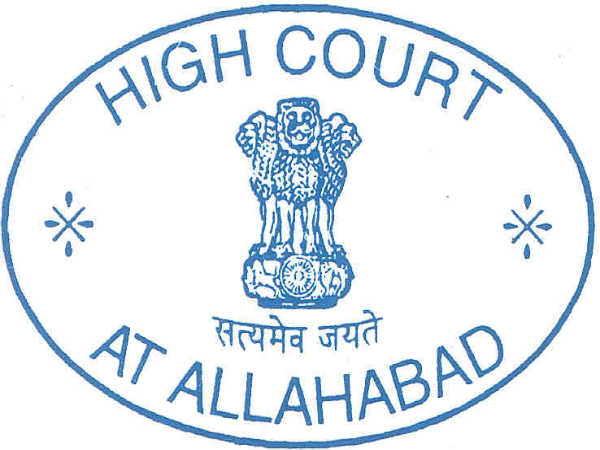History
The Bareilly Judgeship came into existence in year 1866 as per available documents in the Hon’ble District Judge Chamber, Mr. Henry V. Star had the honour of being the first District Judge from year 1866 to 1871.There are three outlying Courts functioning at Aonla, Nawabganj and Baheri.As sanctioned by Hon’ble Allahabad High Court another outlying Court at Faridpur is going to start. All the headquarters Courts are functioning under one roof and in bigger and integrated two storey Court campus and at present the total strength of the judicial officers at Bareilly is 51.The symbol of C.T.S Standard Bench Mark stone is symbolically shown in in the garden in front of the building and is laid since 1904.Criminal Courts of Bareilly Judgeship: Sessions Courts/Additional Sessions courts, Chief Judicial Magistrate/ Additional Chief Judicial Magistrate, Judicial Magistrate At present there are twenty one Sessions Courts, CJM and eight ACJM Courts and three Judicial Magistrate Courts including outlying Courts.
Civil Justice Administration
The District Judge’s Court is the appellate Court for civil cases. Then there are fourteen Additional District Judge Courts & five Special Courts. Besides the parent Courts of Civil Judge Senior Division there are other six Civil Judge Senior Division Courts at Bareilly head quarter and besides the parent Courts of Civil Judge Junior Division, City and Hawali there is one other Civil Judge Junior Division Court at Bareilly head quarter and three outlying courts atAonla, Nawabgang and Baheri. Excluding Civil Judges there are ten ACJM & three Judicial Magistrates at Bareilly H. Q., At present all the courts are functional.
Bareilly District
District Bareilly is located at 28*10’N, 78*23’E, its area is 4120 Sq Km. It is bounded in East by Pilibhit, South-East by Shahjahanpur, South-West byBadaun and in North by Nainital and its population is 44,65,344 as per 2011 census. This gives it ranking of 39th in india (Out of a total 640). District Bareilly consists of following sub divisions:
- Aonla
- Baheri City
- Bareilly
- Faridpur
- Meerganj
- Nawabganj.
The District has population density of 1088 inhabitants per Sq Km population growth rate over the decade 2010-11 was 23.4%.Bareilly has a sex ratio of 883 females for every for every 1000 males and Bareilly has an average literacy rate of 84%, higher than the national average of 74%, with 90% of the males and 77% of females literate, making it one of the three most literate districts in Uttar Pradesh the main languages spoken are Hindi, English, Urdu, Punjabi and Kumaoni. For administrative convenience, the district of Bareilly has been divided into 14 blocks and six tehsils:
- Bareilly (Main),
- Aonla,
- Faridpur,
- Mirganj,
- Nawabganj and
- Baheri
Total area under Bareilly district is about 4,120 square kilometres(1,590 sq miles). Religions in Bareilly:
- Hinduism – 62%,
- Islam -26% ,
- Sikh -10% ,
- Others – 2%
Bareilly is a metro city and district in the Northern Indian state of Uttar Pradesh. Standing on the Ramganga river, it was the capital of Rohilakhanddivision and is a centre for the manufacturing of furniture and for trade in cotton, grain and sugar.The city’s population in 2001 was 699838 geographically it forms the outer gateway to enter Uttarakhand state. Bareilly is the 4th city of Uttar Pradesh, which has CNG fuel stations after Lucknow, Kanpur and Agra. Bareilly is the 7th largest metropolitan city of Uttar Pradesh and 50th largest metropolitan city of India.Bareilly is also known as bans-Bareilly, due to its big bamboo market.Bareilly is also known as the counter magnet city because it is equidistant from New Delhi and Lucknow and has a lot of potential for setting up industries and to attract people to settle here.It is one of the biggest cities of Uttar Pradesh state, historically it was the part of the ancient kingdom of Panchal. In the Medieval period it was under the Rohillas. The city of Bareilly was founded in 1537 by Basdeo, a Katehriya Rajput. The city is mentioned in the histories for the first time by Badauni who has written that one Husain Quli Khan was appointed the governor of ‘Bareilly and Sambhal’ in 1568. The divisions and revenue of the district “being fixed by Todar Mal” were recorded by Abul Fazl in 1596. The foundation of the ‘modern’ City of Bareilly was laid by Mukrand Rai in 1657. In 1658, Bareilly was made the headquarters of the province of Budaun.



